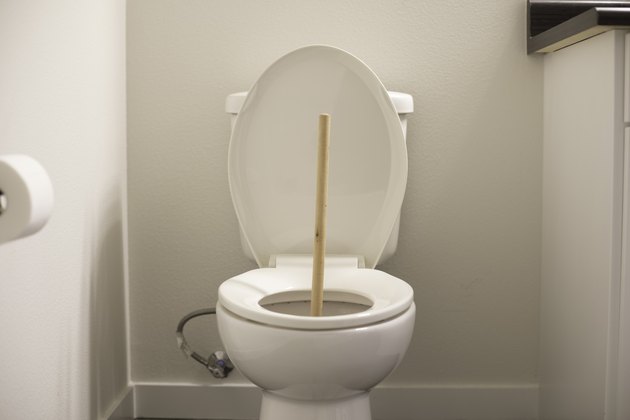Plumber Services: Sewer Inspection and Repair
What You Should Know: Sewer Line Inspection and Repair
Sewer inspection and repair is nowhere near as difficult as it used to be. We now have the technology to not only inspect problems without digging, but repair or either fully replace systems without having to do so. Here is a quick guide to what you should know about sewer line inspection
Inspections
Inspecting sewers is a very simple process nowadays. Whereas in the past, the whole area would have to be dug up to identify which sections were causing trouble, now a video camera can just be inserted into the pipe instead. These cameras are able to give a clear picture of what is going on inside the pipe, and precisely which parts are in need of repair. They can assess the type of damage and the severity of it – cracks may have formed due to root intrusion, old materials may be breaking down or the pipes may just be clogged.
This video technology is perfect for the average homeowner, who is unlikely to be an expert on the sewers. This allows them to fully understand what is going on and the mistakes that they have perhaps been mistaking. It can also stop them from being overcharged by bad repairmen, who in the past could try and say that a problem is worse than it actually is.
Video cameras can be used after repairs too, to clarify which areas have been fixed and if the job has been done properly. For example, if the pipe has been relined, a video inspection can discover whether the new lining has hardened against the existing pipe as it should.

What a Sewer Camera Inspection Can Do
While a sewer camera cannot find leaks, there are certain situations where the camera alone is effective.
Locate Lines
Sewer cameras have location devices that send out a signal. Using a special signal receiver above ground, our plumbers pinpoint where the camera is underground.
Drainage or Stoppage Issues
We call this your “sewer is not working as it is designed to work.”
Sewer pipes work using the power of gravity. The pipes flow downhill so when something goes into the pipe—waste, debris, water—it flows or drains down through your piping system and ultimately ends up at your city’s waste treatment center or septic tank, depending on your particular situation.
However, if something is causing your system to not work properly, in most cases we can use a sewer camera to determine what is causing it. Often in cases like these we find stoppages, blockages, roots, mud, broken pipe, etc.
PVC or Cast Iron Pipe
We determine what type of system you have by running a sewer camera inside the pipes.
Sewer System Connections
With a sewer camera, we can see fittings, tee’s, and other types of connection. We can also use it at the connections to run water. We’re able to see where the water flows to or from and/or comes from one line to another.

5 Symptoms of a Damaged Sewer Pipe
If your cast iron sewer pipes are 25 Years old or older, they could fail at any time. Your drainage lines may already be damaged by tree root intrusion, cracks, channeling, or misaligned connections before you experience complete sewer line failure. Do not let your plumbing get to the point where it fails! A failed or collapsed sanitary sewer line will cost you tremendously more to repair than proactive maintenance and repair will. This article highlights 5 tell-tale symptoms that your sewer line is deteriorating and possibly broken.
Sewage Backups and Blockages
Sanitary sewer backups usually occur in the lowest open drain. A sewage backup is typically caused by a blockage somewhere in the line. If you experience a backup every time you flush or run water down your sink or bathtub drain, then the problem is likely in your main sewer line since all drains rely on the main sewer line to drain properly. However, if backups are limited to only one drain then your problem is likely isolated to that drain.
Sewer Gas Odor
If you can smell sewer gas in or around your home or building, this is a tell-tale symptom that there is a crack somewhere in your sewer system. A sanitary sewer should be airtight everywhere with the exception of vent stacks on your roof which allows for the sewage to move downhill. This means that you should never smell sewer odor unless there was a crack or opening in your sanitary sewer lines.
Mold Problem
In addition to sewer odor, mold growth may also be a sign of a break in your sewer lines behind your walls. There are molds that only need the humidity level to be higher than 55% to start growing. Considering that, a cracked sewer pipe behind a wall can cause the humidity levels to rise to a point suitable for a mold problem to begin. If you notice mold growth in your home accompanied by sewer odor then you likely have a break in your sewage drain pipes.
Slow Drain
A slow drain may be a symptom that a blockage is forming which will eventually lead to a sewage backup. If your toilet, bathtub, or sink is draining slowly even after attempts to clear the line, you may have issues such as tree root intrusion, channeling, or cracks, mentioned above in the beginning stages.
Note: Beware of using chemical drain cleaners to solve a slow drain or blockage. As the chemicals sit in the pipe they will eat away at the cast iron and/or PVC.
Extra Green and Lush Patches in Grass
Spotting an extra green and lush patch of grass in your yard may be due to a sewage leak underground. Since sewage acts as a fertilizer for vegetation, leakage from your main line into the surrounding soil will give the surrounding grass extra nutrients that will result in a lush and extra green appearance.

How Often Should I Have My Sewer Line Inspected?
Most experts will recommend having sewer lines inspected prior to purchasing or renting a new home to be sure that there are no issues the buyer might be unaware of. Periodic cleaning of sewer lines can also help prevent clogs and backups in the sewer drains – a headache no one wants to deal with.
If the home has a history of lines draining slowly, it’s a good idea to have them inspected and cleaned before a major clog happens. In addition, homes that are more than forty years old are probably due for a cleaning even if the drains appear to be functioning normally. Other environmental factors can affect the sewer lines as well, such as penetration by tree roots underneath the property. Grease, hair, food, and other blockages can also gradually build up over time and cause a major sewer clog. Signs of trouble include slow drains, foul smells, gurgling pipes, or water pooling around toilets and bathtub drains. Because these things happen beneath the ground, it’s difficult to monitor or even know that there could be an issue without having the line inspected periodically.
How to Clear a Sewer Without a Snake
You can often clear the sewer yourself. The best tool is a sewer auger, also known as a snake, but you can still do the job if you don’t have one. Even though the cost to clear a main sewer line clog can be considerable, you shouldn’t hesitate to get professional help if you’re unsuccessful. Sewer clogs can be caused by tree roots or septic problems that require the use of special tools and techniques.
Use a Plunger to Clear a Main Drain Clog
You may be able to clear a sewer clog by using a plunger.
- Choose a toilet on the ground floor.
- Tape over the tub, sink and shower drains with duct tape. This prevents the force you develop with the plunger from dissipating through the pipes and focuses it on the clog.
- Get a bellows or force-ball plunger, insert it in the toilet bowl, let it fill with water and then plunge away.
You’ll know this technique is working if the standing water in the toilet begins to drain. As soon as this happens, pour 2 or 3 gallons of very hot water in the toilet to help the clog dissolve.
Bust a Sewer Clog With Enzyme-Based Drain Cleaner
It’s hardly ever a good idea to put Drano or a similar product in the toilet because it contains sodium hydroxide, which generates heat and can damage the pipes. It’s a particularly bad idea if it turns out the clog is caused by tree roots or a septic problem because the corrosive chemical will remain in the pipes and could give skin burns to anyone who tries to clear the clog using other methods.
An enzyme-based main line cleaner is safer, but it takes longer to work. If you purchase one of these products, use it according to the directions and give it a few days to do its thing before you move on to the next method.
Attack a Sewer Clog With a Hose or Power Washer
You may need more force to clear an especially stubborn main drain clog, and you should apply it through one of the drain cleanout fittings. You should have one or two of these in the basement and more outside. Open one of them by unscrewing the cap with a wrench and have a bucket handy to catch water. You’ll also want to wear protective clothing, goggles and gloves because the water may be under pressure and could spray when you open the cleanout.
If water does spill out, you’re on the right track because it means the clog is downstream of the fitting. Insert a hose with a high-pressure nozzle or preferably a power-washer wand with a 0° (red) or 15° (green) tip. Place the bucket under the cleanout, point the nozzle downstream, pull the trigger and stand back.
A long, sustained blast of water is more effective than a series of short bursts, but stop when the bucket fills and empty it. If you haven’t made any progress after emptying the bucket two or three times, it’s time to either get an auger or call a plumber.